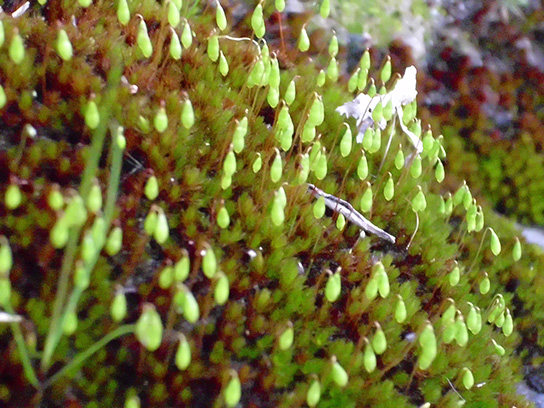| << Chapter < Page | Chapter >> Page > |
Protection of the embryo is a major requirement for land plants. The vulnerable embryo must be sheltered from desiccation and other environmental hazards. In both seedless and seed plants, the female gametophyte provides protection and nutrients to the embryo as it develops into the new generation of sporophyte. This distinguishing feature of land plants gave the group its alternate name of embryophytes .
The sporophyte of seedless plants is diploid and results from syngamy (fusion) of two gametes. The sporophyte bears the sporangia (singular, sporangium): organs that first appeared in the land plants. The term “sporangia” literally means “spore in a vessel,” as it is a reproductive sac that contains spores [link] . Inside the multicellular sporangia, the diploid sporocytes , or mother cells, produce haploid spores by meiosis, where the 2 n chromosome number is reduced to 1 n (note that many plant sporophytes are polyploid: for example, durum wheat is tetraploid, bread wheat is hexaploid, and some ferns are 1000-ploid). The spores are later released by the sporangia and disperse in the environment. Two different types of spores are produced in land plants, resulting in the separation of sexes at different points in the lifecycle. Seedless non-vascular plants produce only one kind of spore and are called homosporous . The gametophyte phase is dominant in these plants. After germinating from a spore, the resulting gametophyte produces both male and female gametangia, usually on the same individual. In contrast, heterosporous plants produce two morphologically different types of spores. The male spores are called microspores , because of their smaller size, and develop into the male gametophyte; the comparatively larger megaspores develop into the female gametophyte. Heterospory is observed in a few seedless vascular plants and in all seed plants.

When the haploid spore germinates in a hospitable environment, it generates a multicellular gametophyte by mitosis. The gametophyte supports the zygote formed from the fusion of gametes and the resulting young sporophyte (vegetative form). The cycle then begins anew.
The spores of seedless plants are surrounded by thick cell walls containing a tough polymer known as sporopollenin . This complex substance is characterized by long chains of organic molecules related to fatty acids and carotenoids: hence the yellow color of most pollen. Sporopollenin is unusually resistant to chemical and biological degradation. In seed plants, which use pollen to transfer the male sperm to the female egg, the toughness of sporopollenin explains the existence of well-preserved pollen fossils. Sporopollenin was once thought to be an innovation of land plants; however, the green algae Coleochaetes forms spores that contain sporopollenin.
Gametangia (singular, gametangium) are structures observed on multicellular haploid gametophytes. In the gametangia, precursor cells give rise to gametes by mitosis. The male gametangium ( antheridium ) releases sperm. Many seedless plants produce sperm equipped with flagella that enable them to swim in a moist environment to the archegonia : the female gametangium. The embryo develops inside the archegonium as the sporophyte. Gametangia are prominent in seedless plants, but are very rarely found in seed plants.

Notification Switch
Would you like to follow the 'Biology' conversation and receive update notifications?